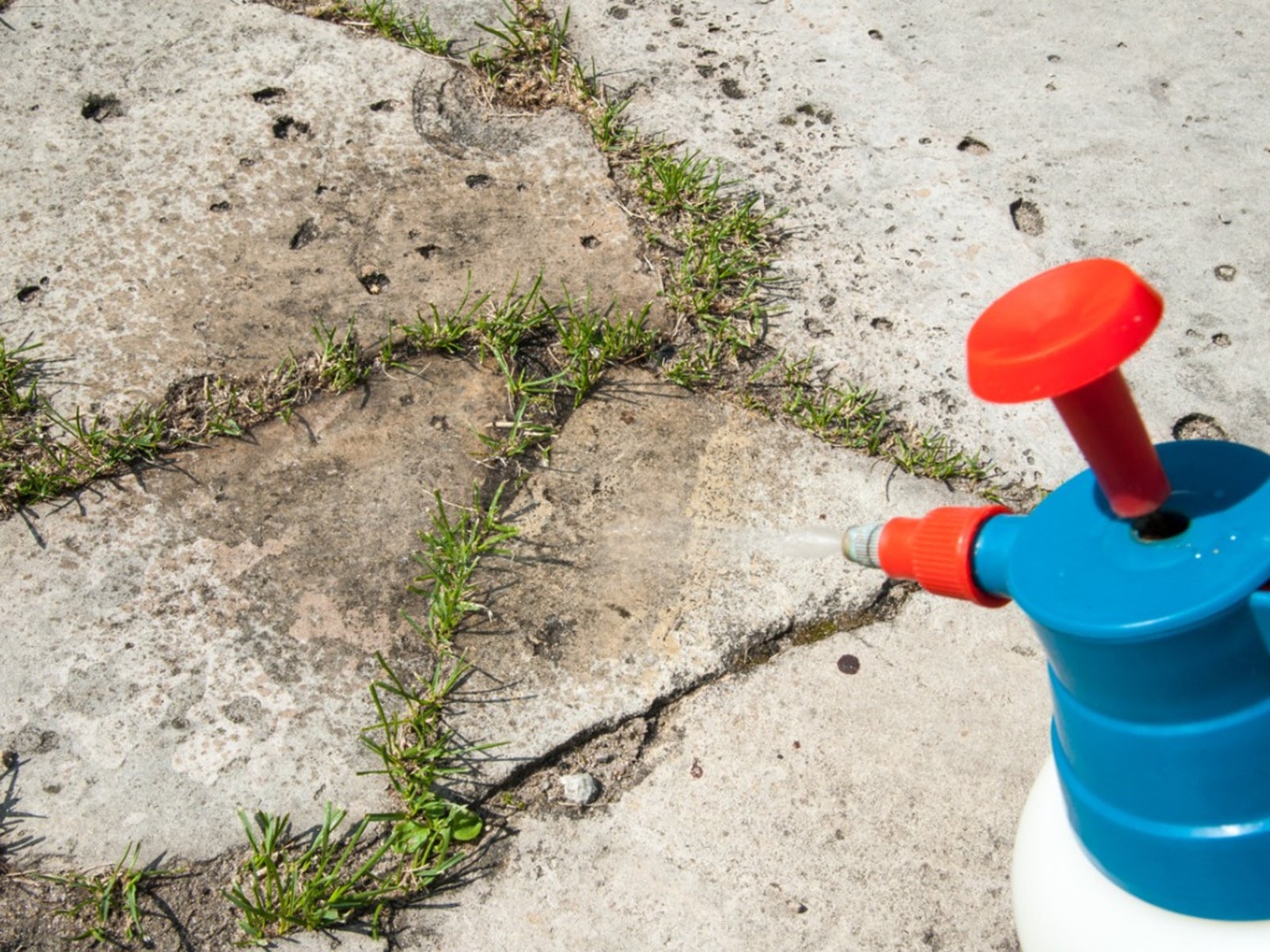Conventional Weed Killers


Conventional, or chemical, weed killers should be used sparingly; however, when done correctly, this method of control can save endless hours spent in the lawn or garden. The majority of conventional weed killers are applied as sprays and the type of weed killer you use may depend on the particular area requiring control. For instance, some are specifically designed for vegetable gardens, while others may be more suited for lawns.
Types of Conventional Weed Killers
Chemical weed killer use depends on the type of plants you're trying to eradicate. There are a number of conventional weed killers. Listed below are the basics: Residual weed killers Soil-acting, or residual weed killers, poison the soil, killing any plants within the treated area. Soil-acting weed killers inhibit seed germination as well as photosynthesis. Some of these weed killers remain in the soil for months or even years. Therefore, you should not apply to sites with edible plants. These types of weed killers are best suited to areas used along paths or between pavings. For areas near flowers, shrubs, or trees, caution should be taken. Since this type of weed killer is so potent to the soil, many of them have been banned, unless its use is deemed essential. It is not recommended to plant anything else in the area for some time after using these weed killers. Contact weed killers If you want to attack weeds within a particular area, or perhaps even a particular weed, then contact weed killers may be what you're looking for. This type of weed control kills only the plants or plant parts with which it comes into contact and is fast acting. Contact weed killers are available in non-selective or selective forms. Contact weed killers are most suitable for annual weeds. Although they do not kill the root systems, these weed killers do weaken the plants after repeated applications, especially on aggressive perennial weeds, and this type is usually the most commonly used. Non-selective types are ideal for clearing areas of ground. Systemic weed killers Systemic weed killers are taken up by the foliage and then transported to the remainder of the plant, including its roots. Systemic weed killers inhibit growth hormonally by reducing the amount of protein and chlorophyll in the plants. With this type of weed killer, it could take up to two weeks before the plants are completely eradicated, and results are noticed. These, too, may be applied to specific plants without damaging others that are close by. This type of weed killer is ideal for use on well-established lawns and will not affect grass. Since only systemic weed killers affect the plant material, the soil should be, in most cases, suitable for other plantings. Although they're not my first choice for solving weed problems, there are numerous types of conventional weed killers available to fit your individual needs. For better results, however, you should familiarize yourself with each of them in order to find and use the right one for the job. Whatever your choice, always follow the directions and apply them safely and sparingly. Note: Any recommendations pertaining to the use of chemicals are for informational purposes only. Chemical control should only be used as a last resort, as organic approaches are safer and more environmentally friendly.
Gardening tips, videos, info and more delivered right to your inbox!
Sign up for the Gardening Know How newsletter today and receive a free copy of our e-book "How to Grow Delicious Tomatoes".

Nikki Tilley has been gardening for nearly three decades. The former Senior Editor and Archivist of Gardening Know How, Nikki has also authored six gardening books.
-
 Looking For Plants To Give You The Soft And Fuzzies? Try These 5 Fuzzy Leaf Plant Options
Looking For Plants To Give You The Soft And Fuzzies? Try These 5 Fuzzy Leaf Plant OptionsLovers of texture, drama, silver foliage and tactile plants will adore these special sensory garden additions. These fuzzy leaf plant options will leave you all aglow
By Susan Albert
-
 Get Ready For A Summer Of Hummers! Grow These Full Sun Hummingbird Plants and Flowers
Get Ready For A Summer Of Hummers! Grow These Full Sun Hummingbird Plants and FlowersIf you’re lucky enough to enjoy a sunny backyard, make sure you are maxing out on your pollinator opportunities and grow these full sun hummingbird plants and flowers
By Tonya Barnett